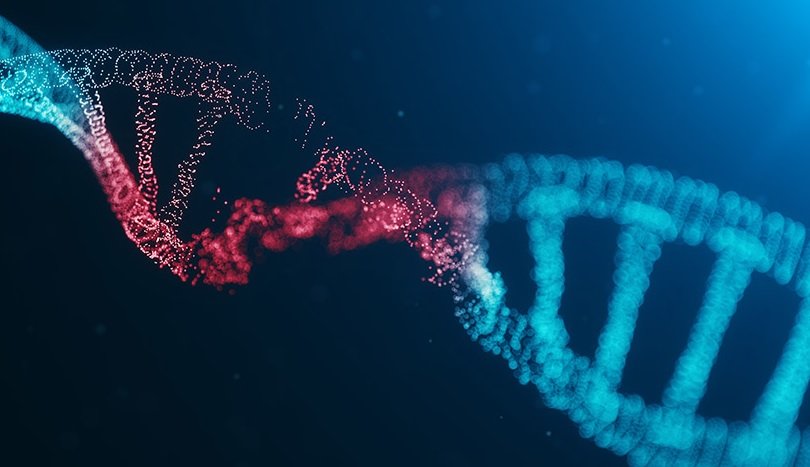A genetic disorder is a disease caused in whole or in part by a change in the DNA sequence away from the normal sequence. Genetic disorders can be caused by a mutation in one gene (monogenic disorder), by mutations in multiple genes (multifactorial inheritance disorder), by a combination of gene mutations and environmental factors, or by damage to chromosomes (changes in the number or structure of entire chromosomes, the structures that carry genes).
Some diseases are caused by mutations that are inherited from the parents and are present in an individual at birth, like sickle cell disease. Other diseases are caused by acquired mutations in a gene or group of genes that occur during a person's life. Such mutations are not inherited from a parent, but occur either randomly or due to some environmental exposure (such as cigarette smoke). These include many cancers, as well as some forms of neurofibromatosis.
About Achondroplasia
What is achondroplasia?
Achondroplasia is caused by a gene alteration (mutation) in the FGFR3 gene. The FGFR3 gene makes a protein called fibroblast growth factor receptor 3 that is involved in converting cartilage to bone. FGFR3 is the only gene known to be associated with achondroplasia. All people who have only a single copy of the normal FGFR3 gene and a single copy of the FGFR3 gene mutation have achondroplasia.
Most people who have achondroplasia have average-size parents. In this situation, the FGFR3 gene mutation occurs in one parent's egg or sperm cell before conception. Other people with achondroplasia inherit the condition from a parent who has achondroplasia.
What are the symptoms of achondroplasia?
People who have achondroplasia have abnormal bone growth that causes the following clinical symptoms: short stature with disproportionately short arms and legs, short fingers, a large head (macrocephaly) and specific facial features with a prominent forehead (frontal bossing) and mid-face hypoplasia.
The intelligence and life span in individuals with achondroplasia is usually normal.
Infants born with achondroplasia typically have weak muscle tone (hypotonia). Because of the hypotonia, there may be delays in walking and other motor skills. Compression of the spinal cord and/or upper airway obstruction increases the risk of death in infancy.
People with achondroplasia commonly have breathing problems in which breathing stops or slows down for short periods (apnea). Other health issues include obesity and recurrent ear infections. Adults with achondroplasia may develop a pronounced and permanent sway of the lower back (lordosis) and bowed legs. The problems with the lower back can cause back pain leading to difficulty with walking.
How is achondroplasia diagnosed?
Achondroplasia is diagnosed by characteristic clinical and X-ray findings in most affected individuals. In individuals who may be too young to make a diagnosis with certainty or in individuals who do not have the typical symptoms, genetic testing can be used to identify a mutation in the FGFR3 gene.
Genetic testing can identify mutations in 99 percent of individuals who have achondroplasia. Testing for the FGFR3 gene mutation is available in clinical laboratories.
What is the treatment for achondroplasia?
No specific treatment is available for achondroplasia. Children born with achondroplasia need to have their height, weight and head circumference monitored using special growth curves standardized for achondroplasia. Measures to avoid obesity at an early age are recommended.
A magnetic resonance imaging (MRI) or CT scan may be needed for further evaluation of severe muscle weakness (hypotonia) or signs of spinal cord compression. To help with breathing, surgical removal of the adenoids and tonsils, continuous positive airway pressure (CPAP) by nasal mask, or a surgical opening in the airway (tracheostomy) may be needed to correct obstructive sleep apnea.
When there are problems with the lower limbs, such as hyperreflexia, clonus or central hypopnea, then surgery called suboccipital decompression is performed to decrease pressure on the brain.
Children who have achondroplasia need careful monitoring and support for social adjustment.
Is achondroplasia inherited?
Most cases of achondroplasia are not inherited. When achondroplasia is inherited, it is inherited in an autosomal dominant manner.
Over 80 percent of individuals who have achondroplasia have parents with normal stature and are born with achondroplasia as a result of a new (de novo) gene alteration (mutation). These parents have a small chance of having another child with achondroplasia.
A person who has achondroplasia who is planning to have children with a partner who does not have achondroplasia has a 50 percent chance, with each pregnancy, of having a child with achondroplasia. When both parents have achondroplasia, the chance for them, together, to have a child with normal stature is 25 percent. Their chance of having a child with achondroplasia is 50 percent. Their chance for having a child who inherits the gene mutation from both parents (called homozygous achondroplasia - a condition that leads to death) is 25 percent.
AMAJUOYI KELECHI EMMANUEL
(MR. REX)
Geneticist and Biotechnologist
Binnabook Magazine Believes in Free Speech,Social Journalism with newsgathering and verification of Data.






0 Comments:
Post a Comment
Your Views are needed.Thanks!